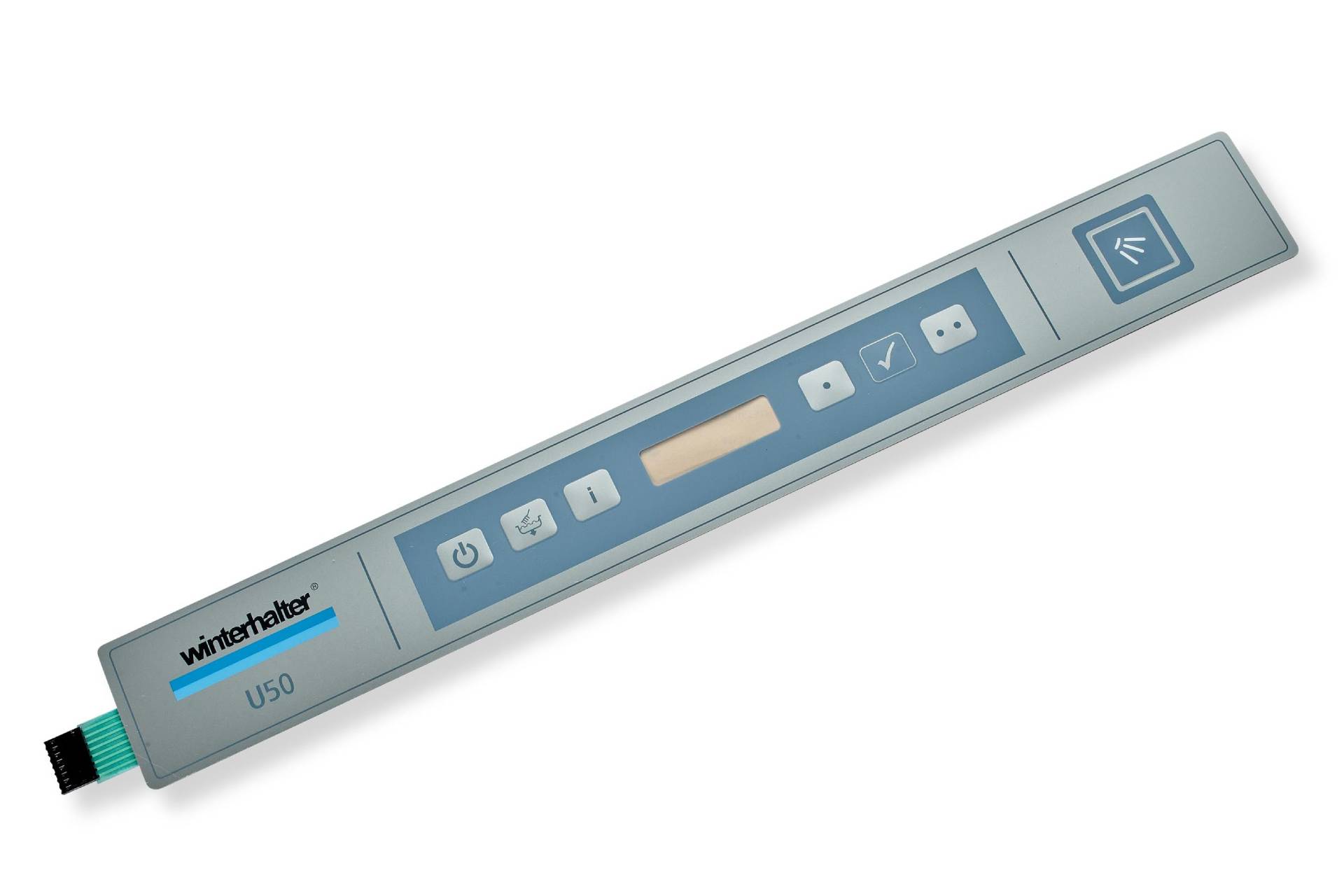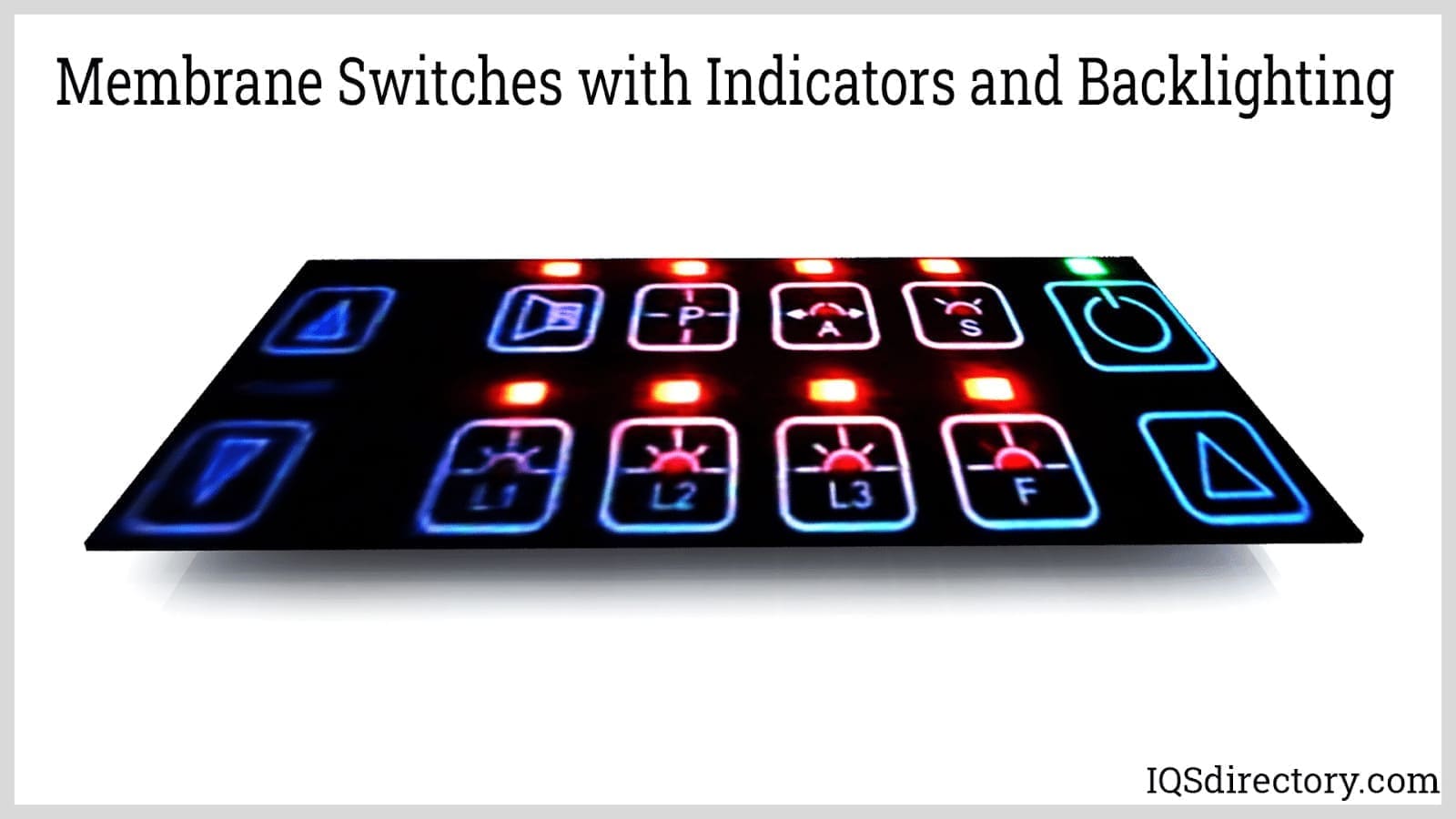Membrane switch durability: How it holds up under tough conditions
All Regarding Membrane Change: A Comprehensive Guide for Beginners
Membrane layer switches are essential parts in modern electronic devices, providing an unique user interface for user communication - membrane switch. Their layered building and construction, including overlays and conductive traces, supplies functionality and longevity. Unlike standard mechanical buttons, membrane buttons present a smooth layout and adjustable alternatives. Recognizing their crucial attributes and benefits can change item design. The complexities of their application and layout factors to consider require additional expedition.
What Is a Membrane Change?
A membrane layer switch is a kind of electrical switch that contains a flexible membrane layered over a published motherboard. This design enables for a smooth and portable interface, commonly made use of in various electronic gadgets. Membrane layer buttons are generally found in consumer appliances, medical devices, and commercial equipment as a result of their sturdiness and resistance to ecological factors.The building and construction generally includes several layers, such as graphic overlays and sticky backing, which supply tactile comments and secure the wiring beneath. The operation of a membrane switch is initiated when pressure is related to the surface, finishing an electric circuit.These buttons are valued for their convenience, making it possible for personalized layouts and published graphics that deal with certain individual interfaces. Their low-profile nature decreases space requirements, making them ideal for applications where traditional buttons might not fit. Generally, membrane switches offer a aesthetic and functional solution for modern-day digital gadgets.
Trick Parts of Membrane Switches
Membrane changes make up a number of key components that add to their capability and performance. The top layer, called the overlay, supplies the interface and is frequently published with graphics or icons. Beneath the overlay exists a spacer layer, which separates the conductive components and stops unintended activation. The following crucial component is the visuals layer, which improves visual appeals and guarantees the longevity of the design.Conductive traces, normally made from materials like silver or carbon, are published on the circuit layer. When pressure is used to the overlay, these traces enter call, completing the circuit. In addition, a backing layer uses structural assistance and can be made from materials such as polyester or polycarbonate. Together, these parts produce a reliable, easy to use user interface appropriate for numerous applications, from home devices to industrial tools. Understanding these aspects is essential for any individual interested in membrane button modern technology.
Exactly How Membrane Layer Switches Over Work
Comprehending just how membrane layer switches function is necessary for appreciating their prevalent usage in different gadgets. A membrane layer switch operates with a collection of layers, consisting of a graphic overlay, spacer, and a circuit layer. When pressure is related to the overlay, it presses the spacer layer, permitting the circuit layer to make contact and complete an electrical circuit. This action sends out a signal to the tool, motivating a response, such as switching on a light or triggering a function.Membrane switches over can be made with various features, including tactile feedback, backlighting, and customized graphics, boosting user interaction. Their construction permits a closed design, safeguarding the interior elements from dust, wetness, and pollutants. This longevity makes them ideal for varied applications, from customer electronic devices to commercial devices. Generally, the simplicity and efficiency of membrane switches add to their appeal in modern-day innovation.
Advantages of Membrane Switches Over Mechanical Switches
While mechanical buttons have actually long been a staple in lots of gadgets, membrane switches deal distinctive benefits that make them progressively appealing. One significant benefit is their slim account, permitting even more compact designs and better versatility in product development. In addition, membrane layer switches function an uniform surface, which boosts aesthetic charm and simplifies cleansing, making them appropriate for atmospheres where hygiene is critical.Another benefit is their resistance to dirt and moisture. Unlike mechanical buttons, which can be compromised by ecological aspects, membrane buttons provide a covered user interface that safeguards versus pollutants - membrane switch. In addition, membrane layer switches typically have a longer life-span due to fewer relocating parts, resulting in improved toughness and reliability.Cost-effectiveness is likewise a noteworthy advantage, as membrane buttons can be created in bulk with reduced manufacturing prices. These elements incorporate to position membrane buttons as a useful alternative to standard mechanical choices in various applications
Common Applications of Membrane Layer Switches Over
Membrane layer buttons are widely made use of in various markets, specifically in customer electronics and industrial control board. In customer tools, they provide a smooth, straightforward user interface, while in industrial settings, they improve longevity and functionality. Comprehending these applications highlights the adaptability and usefulness of membrane layer switches in modern technology.
Consumer Electronics Tools
As customer electronic devices remain to advance, membrane layer buttons have actually come to be a preferred choice for a variety of devices due to their flexibility and sleek design. These switches are commonly found in smartphones, tablets, and remote controls, where space is limited and aesthetic appeals matter. Their low profile and customizable designs permit suppliers to develop straightforward user interfaces that improve the general individual experience. Additionally, membrane buttons are usually made use of in devices such as microwaves and coffee manufacturers, supplying user-friendly control options while resisting moisture and dust. The durability and reliability of membrane layer changes make them suitable for day-to-day customer items, guaranteeing longevity and regular efficiency. On the whole, their combination in customer electronics reflects a mix of performance and modern layout.
Industrial Control Panels
The applications of membrane switches prolong beyond customer electronics, locating considerable usage in industrial control panels. These buttons are favored for their durability and resistance to rough atmospheres, making them ideal for making and process control setups. They offer a reliable user interface for drivers to manage equipment, screen procedures, and adjust setups. Membrane switches can be tailored to suit certain operational requirements, including functions like backlighting and responsive feedback, improving user experience. Their inconspicuous design enables for assimilation into different tools, while their ability to hold up against spills, dust, and extreme temperature levels guarantees durability. On the whole, membrane switches contribute to reliable and secure procedure in commercial applications, demonstrating their flexibility and efficiency in requiring environments.
Considerations for Designing Membrane Layer Switches Over
When designing membrane switches, selecting the best products is necessary to guarantee sturdiness and performance. Additionally, comprehending layer setup methods can substantially influence the button's efficiency and customer experience. These factors to consider play an important role in creating reputable and reliable membrane layer button styles.
Material Selection Significance
Material selection plays an important role in the design and functionality of membrane layer buttons. The selected materials directly influence the button's longevity, responsive action, and general websites aesthetic. Key factors to consider consist of the substrate, which should offer structural honesty while enabling versatility, and the graphic overlay, which needs to be immune to use and environmental factors. Conductive products must guarantee reliable electric performance, while adhesives must supply solid bonding without jeopardizing the switch's procedure. Furthermore, compatibility with manufacturing procedures and end-user atmospheres is vital; products should endure differing temperatures, moisture levels, and chemical exposure. Eventually, suitable product choice not just improves the membrane switch's efficiency but additionally adds to its long life and user satisfaction, making it an essential element of the design process.

Layer Setup Strategies

Often Asked Questions
For How Long Do Membrane Switches Over Generally Last?
Membrane layer buttons normally have a life-span of 1 to 5 million cycles, relying on click for more usage and ecological problems. Elements such as layout quality and operating regularity greatly influence their resilience and total performance durability.

Can Membrane Layer Changes Be Personalized for Particular Designs?
Membrane layer switches can certainly be customized to suit certain styles, allowing for varied forms, colors, and functionalities. This convenience allows producers to customize these buttons to meet one-of-a-kind visual and operational needs successfully.
What Materials Are Made Use Of in Membrane Switch Building And Construction?
Membrane layer switches are commonly built making use of materials such as polyester, polycarbonate, and glue layers. These materials supply resilience, resistance, and adaptability to environmental variables, ensuring the switches work properly in numerous applications and conditions.
Are Membrane Switches Over Water-proof or Resistant to Dampness?
Membrane layer buttons can be designed to be moisture-resistant, using specialized finishes and products. Nevertheless, their water resistant capacities rely on building and construction quality and specific applications, making it vital to examine needs for perfect efficiency in various settings.
How Are Membrane Switches Over Repaired if Damaged?
Fixing damaged membrane layer switches normally entails changing the impacted layer or circuit. Technicians may also apply conductive adhesive or use specialized repair packages, making certain capability is restored without complete substitute of the whole switch assembly. Unlike typical mechanical buttons, membrane layer buttons provide a sleek design and personalized options. A membrane layer switch is a type of electrical switch that is composed of an adaptable membrane you could try here layered over a printed circuit board. The operation of a membrane layer switch is started when stress is used to the surface, completing an electrical circuit.These switches are valued for their adaptability, allowing customized layouts and printed graphics that cater to details individual interfaces. While mechanical switches have actually long been a staple in numerous gadgets, membrane switches deal unique benefits that make them significantly appealing. Membrane layer buttons generally have a longer lifespan due to less moving components, resulting in boosted longevity and reliability.Cost-effectiveness is additionally a noteworthy advantage, as membrane buttons can be generated in mass with lower production prices.